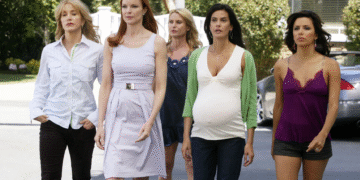The Society of the Americas inaugurated this Wednesday a group exhibition that explores the works of art, performances, and experimental practices of 41 artists from Latin America and the Caribbean and 11 organizations, which helped turn New York into the center of global art. what is today.
The exhibition “This Must Be the Place: Latin American Artists in New York, 1965-1975” brings together a generation that actively participated in experimental art movements while promoting their own languages and visual ideas, with works that explore themes of migration, identity , politics, exile and nostalgia, the organization highlighted in a statement.
By the end of 1960 New York had already become the center of the international art world, and the decade between 1965 and 1975 was a key period for the development of Latin American art in the United States, highlighted in a statement Aimé Iglesias Lukin, director and chief curator of visual arts of the Society of the Americas.
The exhibition consists of two parts, both with the same list of artists but with different works, one that opens today and will be shown until December 18, and another that opens on January 19, 2022 to May 14.
The exhibition will show works by the Argentine Alberto Greco, the Cuban Waldo Balart, the Uruguayan Luis Camnitzer, the Brazilian Antonio Dias, the Chilean Juan Downey, the Puerto Rican Carlos Irizarry, the Paraguayan Laura Márquez or the Argentine Liliana Porter.
In the exhibition, which consists of installation, photography, video art, painting and archive material, the important contributions and solidarity initiatives of groups and collectives also stand out, testimony to the effort of these artists to create community and forge a space for themselves, he adds. the organization.
Some of those groups whose work is part of the show include the CHARAS cultural community center, the Boricua Workshop, Latin American Opinion Fair, An Evening Concert with Salvador Allende, Ramona Parra Brigade, Contrabienal, Cha / Cha / Cha, Young Filmmakers Foundation, Young Lords and the Museo del Barrio.
According to Iglesias Lukin, the contributions of these artists “revealed a more diverse and cosmopolitan scene than is typically depicted in postwar American art historiography.”
He highlighted that by actively participating in experimental artistic movements such as minimalism, conceptualism and Fluxus (an interdisciplinary movement that was considered the last great Western artistic movement heir to the Vanguards), they challenged the folkloric understanding of Latin American artistic production promoted by the majority. of the cultural institutions of the United States and the art market.
“For these artists, ‘Latinoamericano’ was not a label that they necessarily identified with before arriving in New York, but rather a label that was made relevant by shared experiences and a new sense of affinity,” adds Iglesias Lukin.
The exhibition will be accompanied by two publications: an illustrated guide to the exhibition with a curatorial text along with the full list of works and a separate book highlighting the voices of artists and documents from that era to be published in January 2022, for the opening of the second part.
The Society of the Americas, established in 1965 and dedicated to education, debate and dialogue in the Americas, will also carry out a series of public, face-to-face and virtual programs that will accompany the exhibition, including discussion forums, presentations and free gallery visits.




















































































